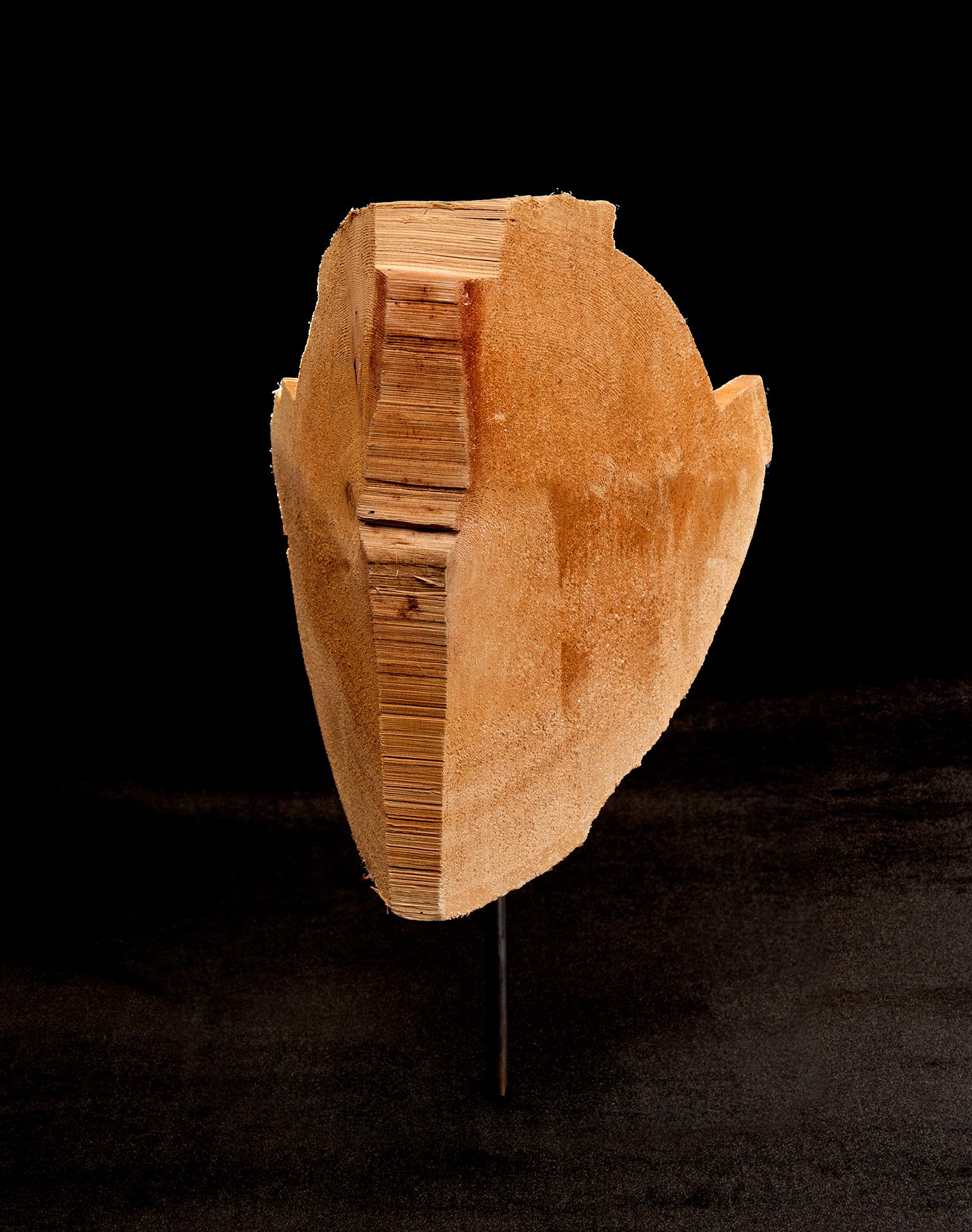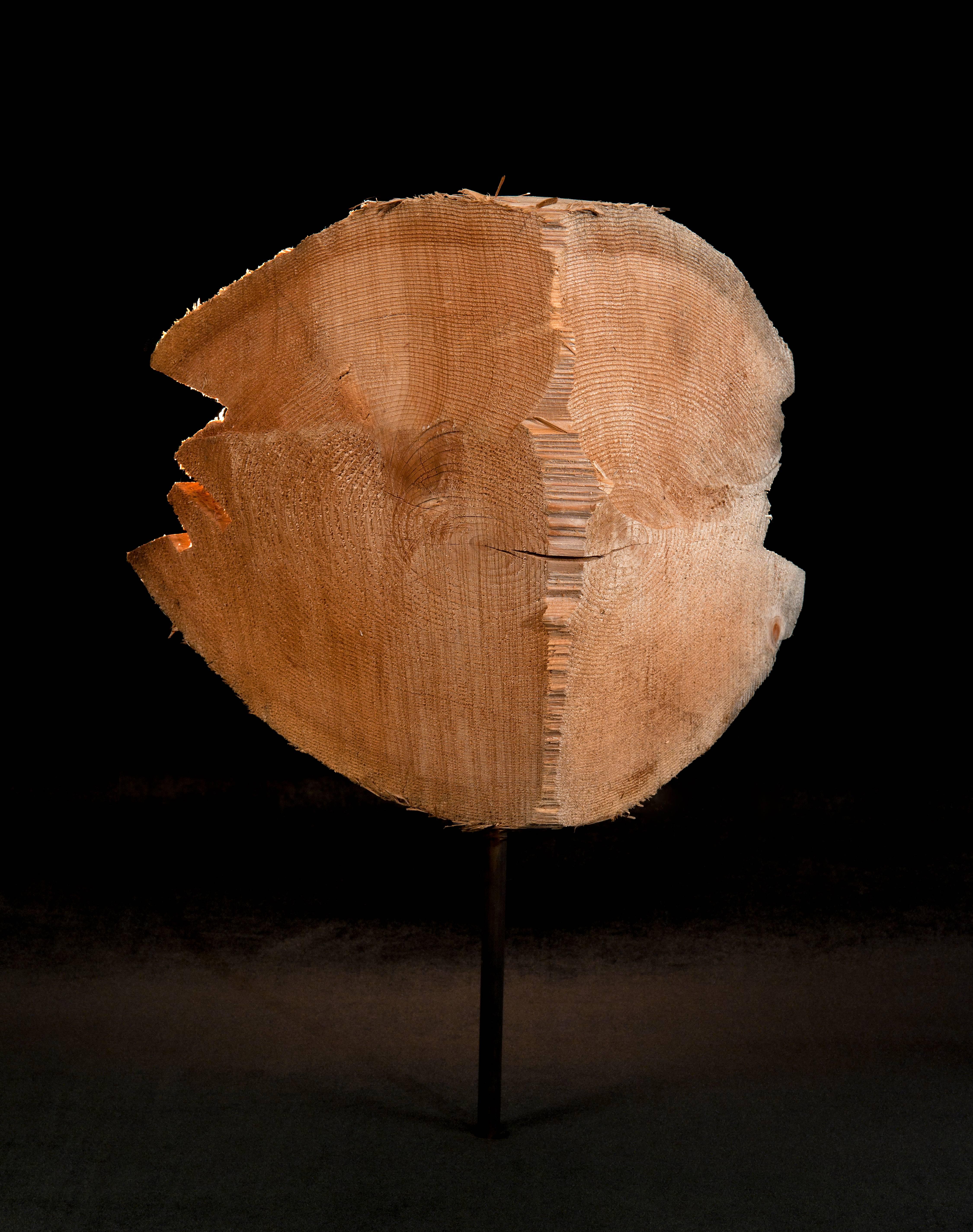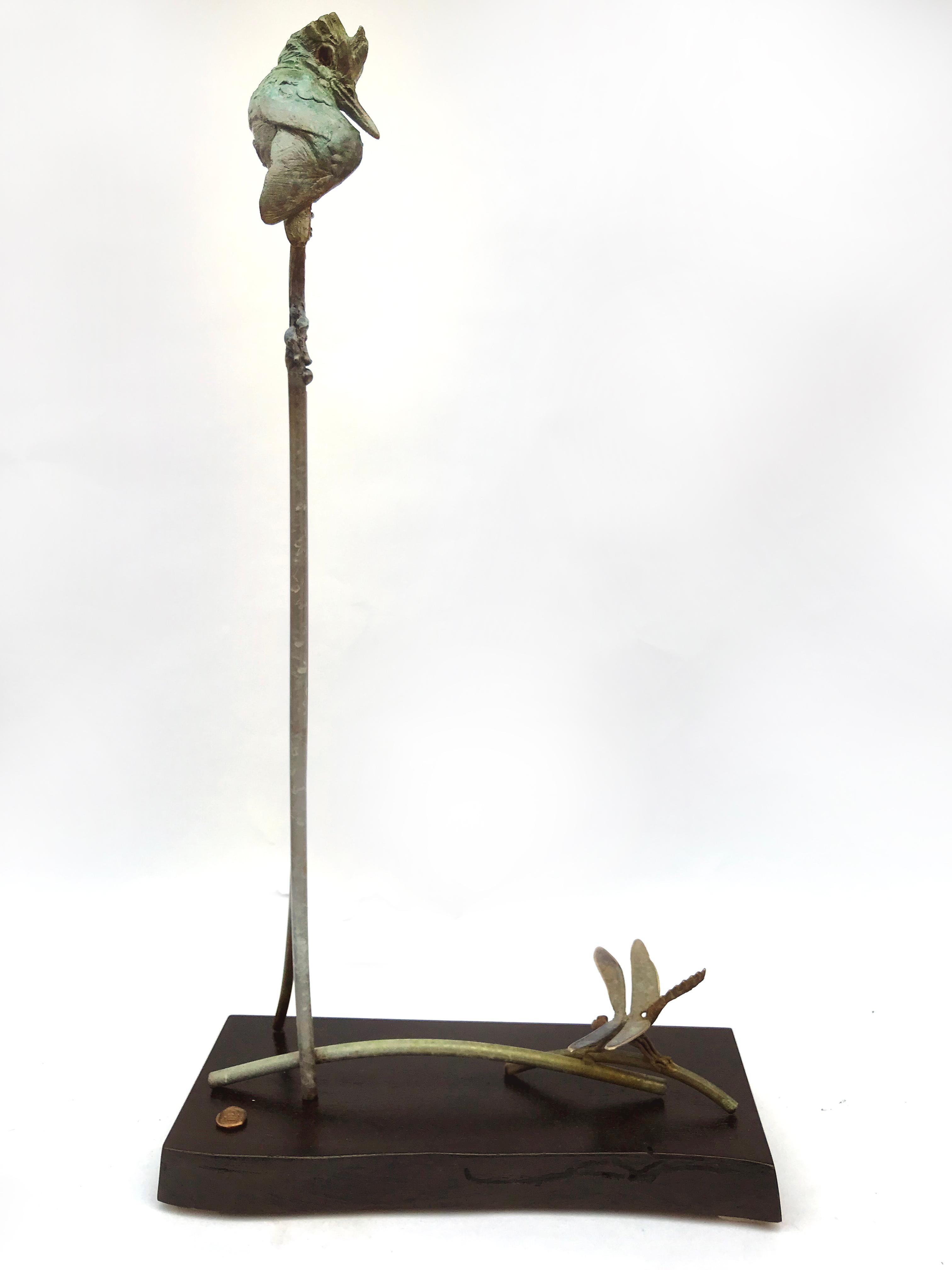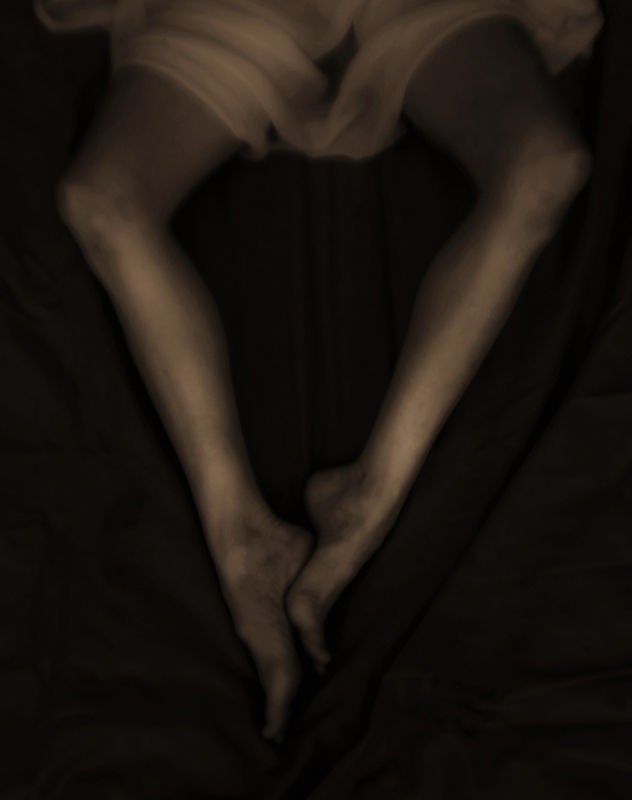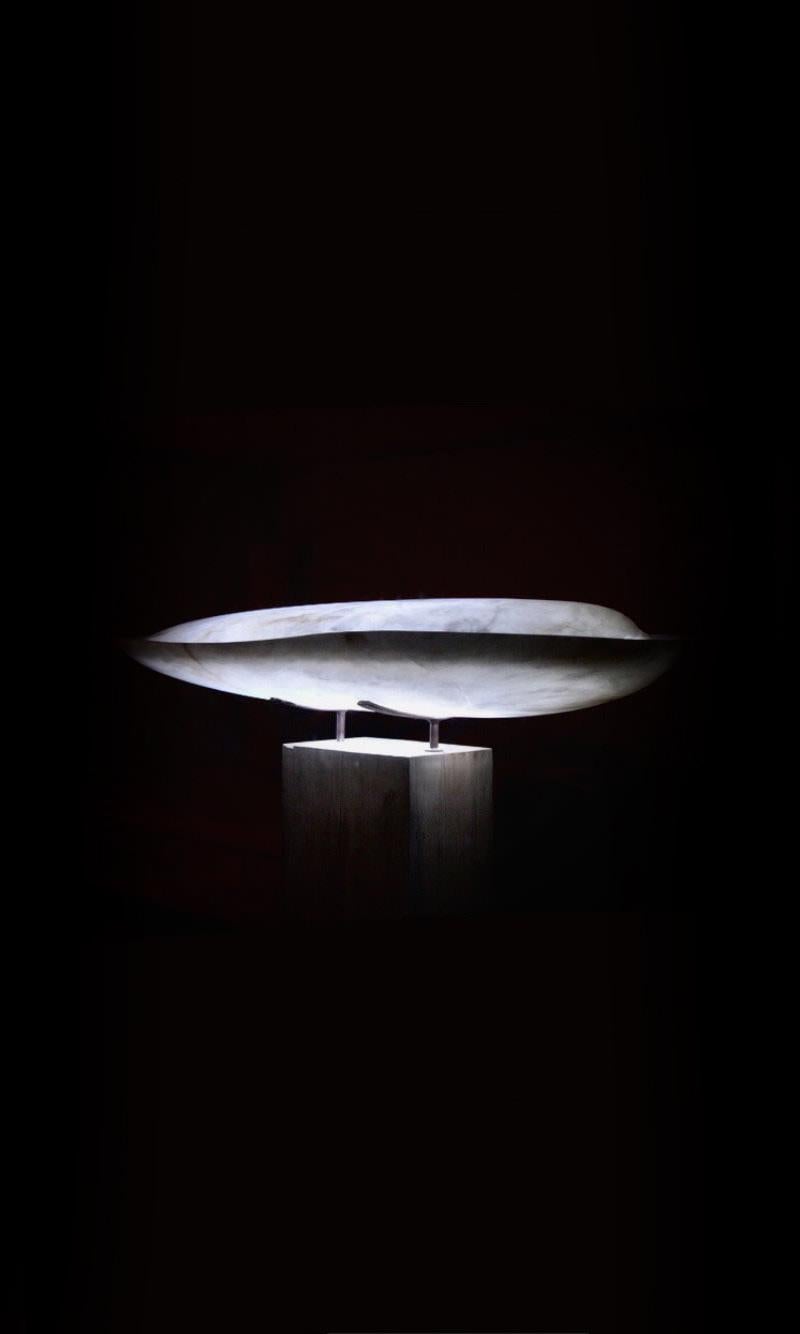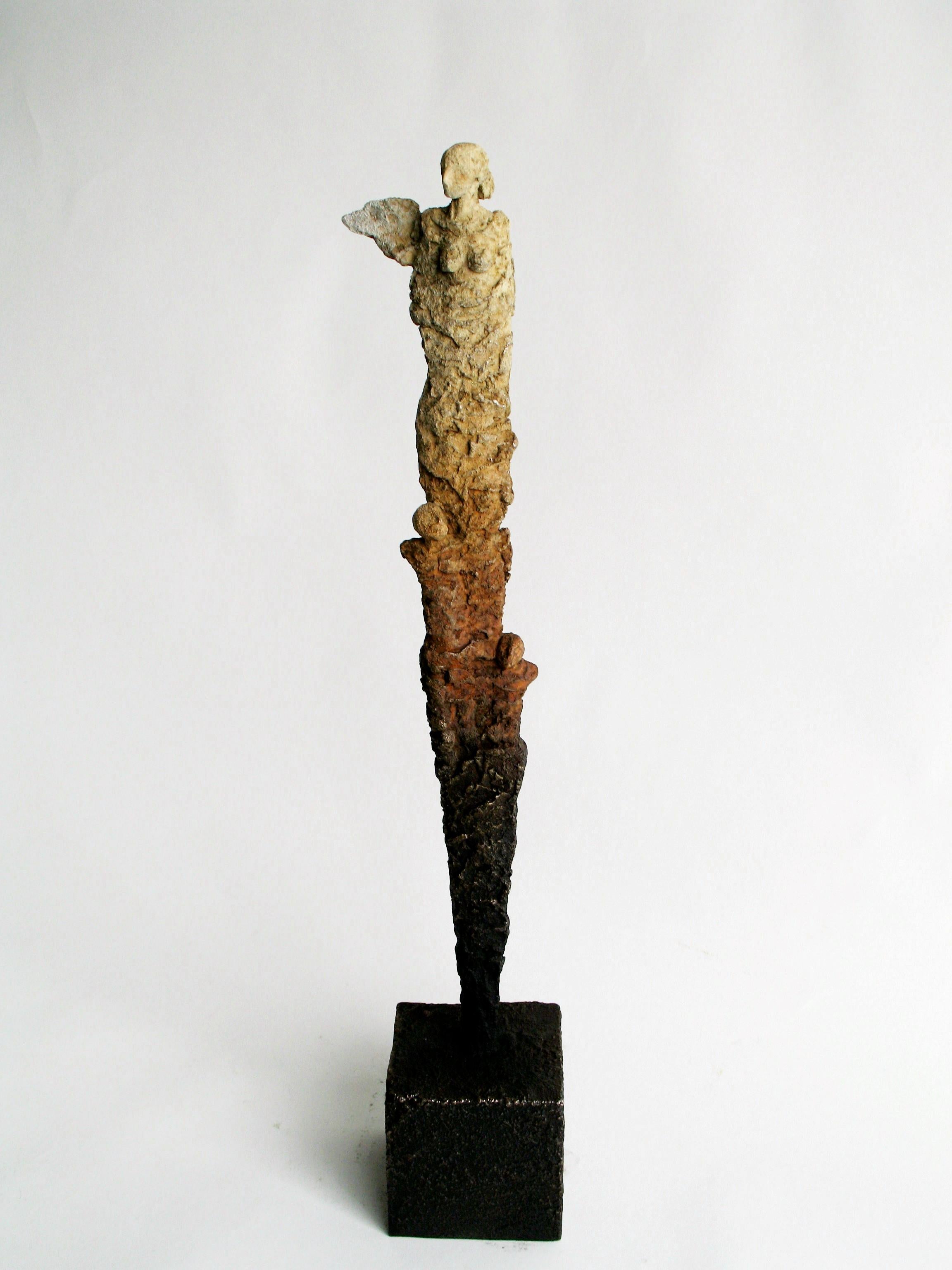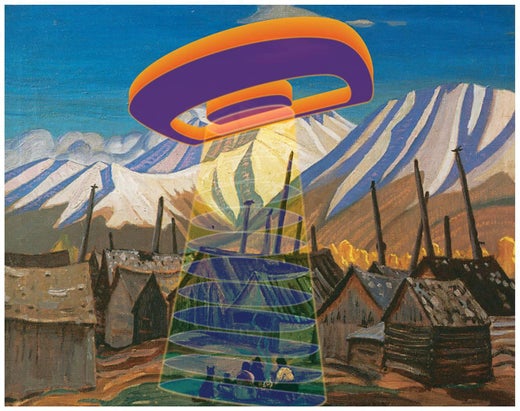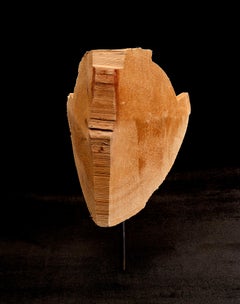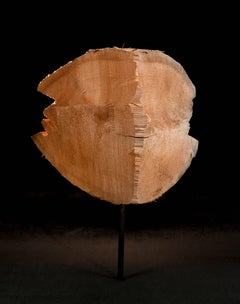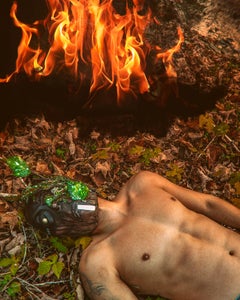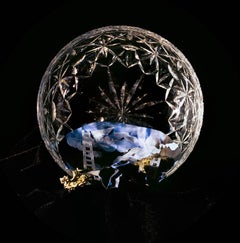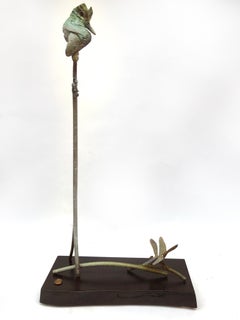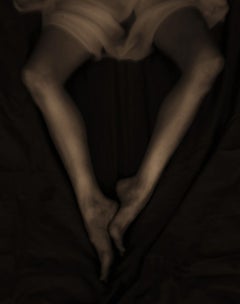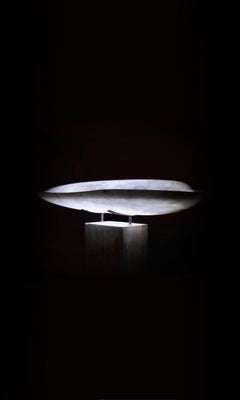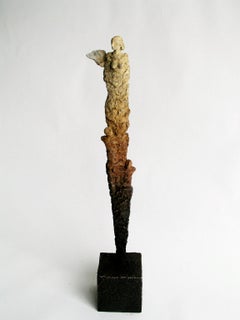Want more images or videos?
Request additional images or videos from the seller
1 of 6
Sonny AssuLonging #282011
2011
$1,200
£916.74
€1,053.12
CA$1,718.08
A$1,879.38
CHF 979.18
MX$22,613.22
NOK 12,400.06
SEK 11,642.47
DKK 7,864.20
About the Item
Four years ago, I stumbled upon the site of a log-home developer on the traditional territory of the We Wai Kai Nation, my reserve on northeastern Vancouver Island. I found it comical that my nation leased a plot of land, on un-ceded territory, to a company that exploits our resources to assemble log homes to be shipped off to the wealthy around the world.
While exploring the piles of discarded wood, I discovered a unique by-product of this industry: off-cuts that looked remarkably like pre-fabricated Northwest Coast masks. Left to be reclaimed by the earth or chipped up into cat litter, they are considered worthless by the developer and the consumer.
These “masks” have an inherent beauty: the poetics of a chainsaw paired with centuries-old growth rings reveal the wisdom of these once majestic cedar trees. Each one has a face and story within—and therefore also an inherent wealth. The felling of the rainforest enables us to display wealth in the form of luxury vacation homes, but we often give little thought to the waste produced by such affluence.
Historically, dominant cultures and ruling authorities have taken it upon themselves to preserve artifacts from perceived lesser societies, displaying the objects in galleries as a sign of their own wealth and authority. Today, we show our prosperity by accumulating posh, inanimate objects. And perhaps subconsciously we display the waste from this consumption (water bottles, disposable coffee cups, product packaging) as further markers of wealth.
Longing is my commentary on what these waste products could have been. The display of these discarded objects, using museum-quality mask mounts, assigns wealth in an artistic and anthropological sense. Through this work I challenge the institutions to collect remnants of our consumption culture.
Sonny Assu was raised in North Delta, BC, over 250 km away from his home ancestral home on Vancouver Island. Having been raised as you "everyday average suburban white-kid" it wasn't until he was eight years old that he discovered his Kwakwaka’wakw heritage. Later in life, this discovery would be the conceptual focal point of his contemporary art practice.
Having cut his teeth in Vancouver's art scene, Assu packed up and moved to Montreal to be with the love of his life. Five years later, along with his wife and beautiful daughter, Sonny moved back to BC, settling in Surrey's Crescent Park. Having grown tired of the isolation of the area and the ridiculousness of the over-inflated housing market, Assu and his family moved "home" to unceded Liǥwildaʼx̱w territory (Campbell River, BC.).
Assu graduated from Emily Carr University (2002) and was the recipient of their distinguished alumni award in 2006. He received the BC Creative Achievement Award in First Nations art in 2011 and was long-listed for the Sobey Art Award in 2012, 2013 and 2015.
His work has been accepted into the National Gallery of Canada, Seattle Art Museum, Vancouver Art Gallery, Museum of Anthropology at UBC, Burke Museum at the University of Washington, Art Gallery of Greater Victoria, Hydro Quebec, Lotto Quebec and in various other public and private collections across Canada, the United States and the UK.
- Creator:Sonny Assu (1975, Canadian)
- Creation Year:2011
- Dimensions:Height: 19 in (48.26 cm)Width: 15 in (38.1 cm)
- Medium:
- Movement & Style:
- Period:
- Condition:
- Gallery Location:Montreal, CA
- Reference Number:1stDibs: LU4762028123
Sonny Assu
Sonny Assu (Liǥwildaʼx̱w of the Kwakwaka’wakw Nations) was raised in North Delta, BC, over 250 km away from his home ancestral home on Vancouver Island. Having been raised as your everyday average suburbanite, it wasn’t until he was eight years old that he discovered his Liǥwildax̱w/Kwakwaka’wakw heritage. Later in life, this discovery would be the conceptual focal point that helped launch his unique art practice. Assu’s artistic practice is diverse: spanning painting, sculpture, photography, digital art and printmaking. Sonny negotiates Western and Kwakwaka’wakw principles of art making as a means of exploring his family history and the experiences of being an Indigenous person in the colonial state of Canada. Having cut his teeth in Vancouver’s art scene, Assu packed up and moved to Montreal to be with the love of his life. Five years later, along with his wife and beautiful daughter, Sonny moved back to BC, eventually settling back “home” in unceded Liǥwildaʼx̱w territory (Campbell River, BC.). Assu received his BFA from the Emily Carr University in 2002 and was the recipient of their distinguished alumni award in 2006. He received the BC Creative Achievement Award in First Nations art in 2011 and was thrice long-listed for the Sobey Art Award. He received his MFA from Concordia University in 2017 and was one of the Laureates for the 2017 REVEAL – Indigenous Art Awards. His work has been accepted into the National Gallery of Canada, Seattle Art Museum, Vancouver Art Gallery, Museum of Anthropology at UBC, Burke Museum at the University of Washington, Art Gallery of Greater Victoria, Hydro Quebec, Lotto Quebec and in various other public and private collections across Canada, the United States and the UK.
About the Seller
5.0
Vetted Professional Seller
Every seller passes strict standards for authenticity and reliability
Established in 1996
1stDibs seller since 2014
105 sales on 1stDibs
Typical response time: <1 hour
- ShippingRetrieving quote...Shipping from: Montreal, Canada
- Return Policy
Authenticity Guarantee
In the unlikely event there’s an issue with an item’s authenticity, contact us within 1 year for a full refund. DetailsMoney-Back Guarantee
If your item is not as described, is damaged in transit, or does not arrive, contact us within 7 days for a full refund. Details24-Hour Cancellation
You have a 24-hour grace period in which to reconsider your purchase, with no questions asked.Vetted Professional Sellers
Our world-class sellers must adhere to strict standards for service and quality, maintaining the integrity of our listings.Price-Match Guarantee
If you find that a seller listed the same item for a lower price elsewhere, we’ll match it.Trusted Global Delivery
Our best-in-class carrier network provides specialized shipping options worldwide, including custom delivery.More From This Seller
View AllLonging #29
By Sonny Assu
Located in Montreal, Quebec
Four years ago, I stumbled upon the site of a log-home developer on the traditional territory of the We Wai Kai Nation, my reserve on northeastern Vancouver Island. I found it comica...
Category
2010s Contemporary Figurative Photography
Materials
Archival Pigment
Longing #2
By Sonny Assu
Located in Montreal, Quebec
Four years ago, I stumbled upon the site of a log-home developer on the traditional territory of the We Wai Kai Nation, my reserve on northeastern Vancouver Island. I found it comica...
Category
2010s Contemporary Figurative Photography
Materials
Archival Pigment
Untitled
Located in Montreal, Quebec
In a series of portraits documenting the body in nature, Isaac’s model dons a fantastical mask — one side overgrown with fledgling greenery while the other half conjures a ghost of t...
Category
2010s Contemporary Figurative Photography
Materials
Digital
Ascent
By Holly King
Located in Montreal, Quebec
King creates large format photographic landscapes in her studio with sculptural props and painted backdrops. She is interested in the tension between artifice and constructed realiti...
Category
2010s Contemporary Still-life Photography
Materials
Photographic Paper
$5,000
Untitled
Located in Montreal, Quebec
In a series of portraits documenting the body in nature, Isaac’s model dons a fantastical mask — one side overgrown with fledgling greenery while the other half conjures a ghost of t...
Category
2010s Contemporary Figurative Photography
Materials
Digital
Untitled
By Eddy Firmin
Located in Montreal, Quebec
The first decades of the 21st century shaped the period of reconfiguration of the "world order", according to Pedro Pablo Gómez1, into three options: "rewesternalization, dewesternal...
Category
2010s Contemporary Figurative Sculptures
Materials
Metal
You May Also Like
Longing
Located in Colorado Springs, CO
Edition #17/75 - Original bronze sculpture by Dan Chen.
Signed on bronze sculpture.
Category
21st Century and Contemporary Realist Sculptures
Materials
Bronze
$1,800
Together
By Ron Hamad
Located in Hudson, NY
Listing is for UNFRAMED print. Inquire within for framing. Price and size range (Custom mural sizes available). All the photographs are in a limited edition.
Edition 1 of 15.
If the...
Category
21st Century and Contemporary Contemporary Figurative Photography
Materials
Archival Pigment
$1,250
Transient
Located in Miami Beach, FL
Gabriel Sobin was born in 1971 in Salon de Provence, France, to an English mother and an American father. Sobin studied at l’École d’Arts Appliqués Oli ...
Category
2010s Abstract Abstract Sculptures
Materials
Alabaster
$32,000
Celeste
By Gustavo Torres
Located in Fort Lauderdale, FL
Bronze Sculpture
Category
2010s Contemporary Sculptures
Materials
Bronze
Price Upon Request
Homage
Located in Los Angeles, CA
These images are available as hand-pulled polymer photogravures, made with bone
black and warm sepia inks on Hahnemühle Copperplate paper.
Edition of 109
7 x 9 photopolymer gravure
Signed numbered and dated by the artist.
The photographs and poem that evolved into this series of photographs and the accompanying book “Yesterday” were made during the summer of 2020. Although
much of the country was in the midst of the Covid 19 pandemic, on this remote island off the coast of Maine, we still felt free from much of the toll that Covid was taking.
Able to spend time outside, in nature, we had the illusion of safety, of normalcy almost, whilst at the same time being painfully aware of how the virus was increasingly
touching everyone's lives. By then we all knew of people who had died, or become ill and we were managing the stress of futures shifting and plans that had been derailed,
fearing what would come with the change of the seasons. That summer represented a pause in time, a moment where life could feel normal, when we were still holding on to a world of yesterdays.
Maine-based photographic artist and writer Sal Taylor Kydd uses various photographic media in a personal narrative that explores themes around memory and belonging; combining her poetry with alternative processes of photography and object-making.
Taylor Kydd’s fine art photographs have been exhibited throughout the country and internationally, including Barcelona, San Miguel De Allende, Portland, Boston and Los Angeles; and she has been featured in numerous publications, including Shots Magazine, Don’t Take Pictures Magazine, Lenscratch, Diffusion Annual and The Hand magazine.
She has self-published a number of books combining her poetry with her photographs. Her books are in private and museum collections throughout the country including The Getty Museum, Bowdoin College, The Peabody Essex Museum and the Maine Women Writer’s Collection at the University of New England. Taylor Kydd’s latest book “Yesterday”, produced by Datz Press, is a limited edition book of poems and photographs that explores our sense of loss around the pandemic of 2020.
Taylor Kydd is also a veteran workshop leader and educator and has led workshops and conducted portfolio reviews throughout the country and internationally with Maine Media, Santa Fe Workshops, Palm Beach Photography...
Category
2010s Romantic Figurative Photography
Materials
Photogravure
Untitled
By Rafael Ruz
Located in Barcelona, BARCELONA
The painting is being offered with a work and authenticity certificate
Category
1980s Abstract Abstract Paintings
Materials
Paper, Mixed Media
More Ways To Browse
Northwest Coast
Northwest Coast Mask
Contemporary Metal Wall Sculpture Silver
Holocaust Memorial
Landau Vintage
Miro Plate
Moth Art
Thangka Painting
Framed Matisse
Military Painting
Noahs Ark
Paul Eluard
Pont Des Arts
Skeleton Prints
Stipple Engraving
Vintage Printing Plates
19th Century Orientalist Paintings
Alexander Calder Mobile
